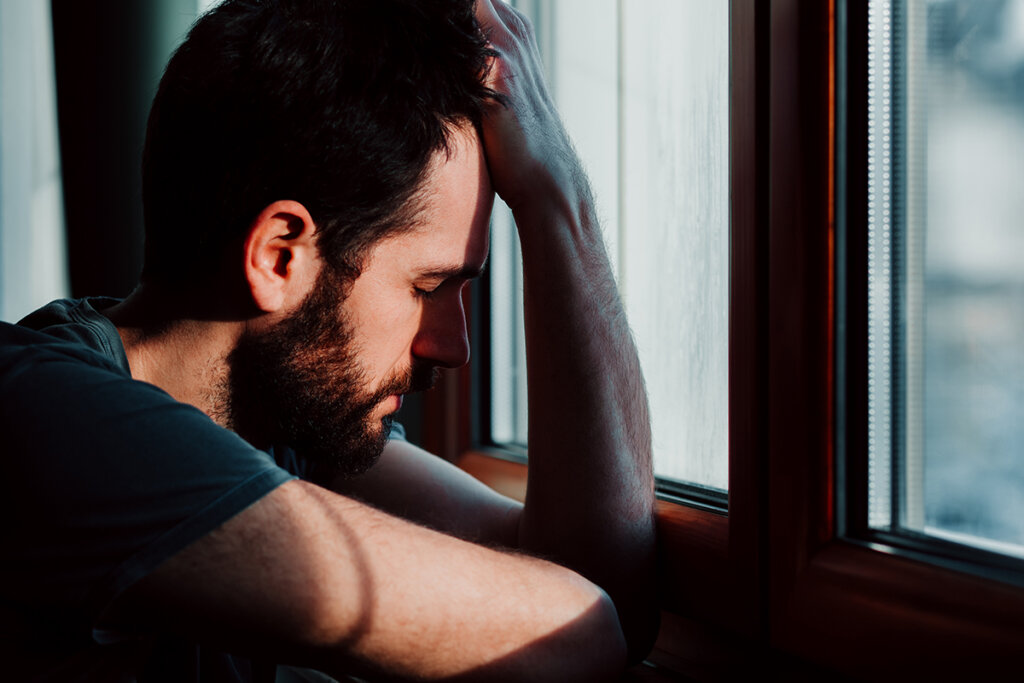The Relationship Between Autism and Social Anxiety


Written and verified by the psychologist Elena Sanz
Autism and social anxiety are two really different conditions, and the vision that society has of each of them is also different. However, they’re actually more closely related than meets the eye. Indeed, people with both conditions may share certain perceptions, behaviors, and difficulties. In fact, both realities can coexist.
In both disorders, social and communication difficulties are significant and shared elements that impose daily limitations. On this basis, erroneous or insufficient diagnoses of social anxiety are sometimes made in people who are really on the autistic spectrum. Knowing their similarities and their relationship can help toward a better understanding and planning of more appropriate interventions.

Autism and social anxiety: are they related?
To put it in context, remember that autism (in reality, autism spectrum disorder or ASD) is a neurodevelopmental disorder that mainly affects social communication and the pattern of behaviors and interests. There are different levels of severity that range from subtle to serious and that condition (to a greater or lesser extent) the functioning and social adaptation of the sufferer.
On the other hand, social anxiety (or social phobia ) is an anxiety disorder. It’s characterized by a persistent and irrational fear of the judgment of other people. It leads the sufferer to avoid exposing themselves to any social situation that implies that possibility. Alternatively, they endure it and experience great discomfort.
Despite the great differences between the disorders, sufferers of both can experience problems with daily interpersonal interactions and be victims of social rejection. In fact, autism and social anxiety share several crossover symptoms and common manifestations.
Crossover symptoms of both conditions
Among the shared symptoms are the following:
- People with both conditions have difficulty fitting in and feeling comfortable in human interactions. Social exchanges aren’t natural, since they feel that they have to make an extra effort to conform to what others expect of them.
- They carry out masking frequently. This is a strategy that consists of playing a role or ‘putting on a mask’ when interacting with others. It means they have to force gestures, words, and reactions as they don’t come naturally to them. It’s a way of camouflaging and avoiding judgment and rejection, but it’s extremely exhausting.
- Although they want to establish social relationships and share with others, these exchanges often generate suffering. In fact, they create anxiety and require considerable effort. Furthermore, on many occasions, they constitute unpleasant experiences or lead to rejection by others.
- In some cases, the tendency to conform to what’s expected, to ‘act’ to be accepted and well valued makes people disconnect from their own opinions and needs. There are sufferers of both social anxiety and who are on the autistic spectrum who’ve dedicated years of their lives to studying human interactions in order to understand them and know how to act. This leaves little room for the expression of their true selves, which they deny or hide to please whoever they’re talking to.
The presence of autism increases the risk of suffering from social anxiety
Research has found that people with autism are more likely to develop social anxiety than neurotypical people. In fact, it’s estimated that 13-40 percent of adults with autism also show comorbid social anxiety. In other words, both diagnoses coexist at the same time.
Taking into account that there are several characteristics of ASD that contribute to increasing the symptoms of social anxiety, this is hardly surprising. For example:
- There are communication problems and difficulties in interpreting body language that lead to a limited ability to socialize.
- People with ASD need more time to process information. This makes it difficult for interactions to be fluid and natural.
- Sufferers of ASD repeatedly experience social rejection throughout their lives. For this reason, they experience social exchanges as negative events that lead them to see themselves as inept and that affect their self-esteem.
- Sensory hypersensitivity also works against them. When the environment is too stimulating (there’s too much sensory information to process in the environment), it increases their anxiety and greatly hinders their communication skills.

The importance of diagnosis and intervention
Despite being two really different conditions, the evolution of both disorders can generate confusion when it comes to diagnosis. Therefore, knowledge of the high comorbidity between autism and social anxiety can prevent this from happening, favoring the implementation of a more optimal intervention plan.
Communication difficulties and fear of social rejection have a profound impact on people’s lives. They affect their self-esteem and limit their possibilities. For this reason, it’s important to raise awareness and offer appropriate coping strategies for each individual case.
Autism and social anxiety are two really different conditions, and the vision that society has of each of them is also different. However, they’re actually more closely related than meets the eye. Indeed, people with both conditions may share certain perceptions, behaviors, and difficulties. In fact, both realities can coexist.
In both disorders, social and communication difficulties are significant and shared elements that impose daily limitations. On this basis, erroneous or insufficient diagnoses of social anxiety are sometimes made in people who are really on the autistic spectrum. Knowing their similarities and their relationship can help toward a better understanding and planning of more appropriate interventions.

Autism and social anxiety: are they related?
To put it in context, remember that autism (in reality, autism spectrum disorder or ASD) is a neurodevelopmental disorder that mainly affects social communication and the pattern of behaviors and interests. There are different levels of severity that range from subtle to serious and that condition (to a greater or lesser extent) the functioning and social adaptation of the sufferer.
On the other hand, social anxiety (or social phobia ) is an anxiety disorder. It’s characterized by a persistent and irrational fear of the judgment of other people. It leads the sufferer to avoid exposing themselves to any social situation that implies that possibility. Alternatively, they endure it and experience great discomfort.
Despite the great differences between the disorders, sufferers of both can experience problems with daily interpersonal interactions and be victims of social rejection. In fact, autism and social anxiety share several crossover symptoms and common manifestations.
Crossover symptoms of both conditions
Among the shared symptoms are the following:
- People with both conditions have difficulty fitting in and feeling comfortable in human interactions. Social exchanges aren’t natural, since they feel that they have to make an extra effort to conform to what others expect of them.
- They carry out masking frequently. This is a strategy that consists of playing a role or ‘putting on a mask’ when interacting with others. It means they have to force gestures, words, and reactions as they don’t come naturally to them. It’s a way of camouflaging and avoiding judgment and rejection, but it’s extremely exhausting.
- Although they want to establish social relationships and share with others, these exchanges often generate suffering. In fact, they create anxiety and require considerable effort. Furthermore, on many occasions, they constitute unpleasant experiences or lead to rejection by others.
- In some cases, the tendency to conform to what’s expected, to ‘act’ to be accepted and well valued makes people disconnect from their own opinions and needs. There are sufferers of both social anxiety and who are on the autistic spectrum who’ve dedicated years of their lives to studying human interactions in order to understand them and know how to act. This leaves little room for the expression of their true selves, which they deny or hide to please whoever they’re talking to.
The presence of autism increases the risk of suffering from social anxiety
Research has found that people with autism are more likely to develop social anxiety than neurotypical people. In fact, it’s estimated that 13-40 percent of adults with autism also show comorbid social anxiety. In other words, both diagnoses coexist at the same time.
Taking into account that there are several characteristics of ASD that contribute to increasing the symptoms of social anxiety, this is hardly surprising. For example:
- There are communication problems and difficulties in interpreting body language that lead to a limited ability to socialize.
- People with ASD need more time to process information. This makes it difficult for interactions to be fluid and natural.
- Sufferers of ASD repeatedly experience social rejection throughout their lives. For this reason, they experience social exchanges as negative events that lead them to see themselves as inept and that affect their self-esteem.
- Sensory hypersensitivity also works against them. When the environment is too stimulating (there’s too much sensory information to process in the environment), it increases their anxiety and greatly hinders their communication skills.

The importance of diagnosis and intervention
Despite being two really different conditions, the evolution of both disorders can generate confusion when it comes to diagnosis. Therefore, knowledge of the high comorbidity between autism and social anxiety can prevent this from happening, favoring the implementation of a more optimal intervention plan.
Communication difficulties and fear of social rejection have a profound impact on people’s lives. They affect their self-esteem and limit their possibilities. For this reason, it’s important to raise awareness and offer appropriate coping strategies for each individual case.
All cited sources were thoroughly reviewed by our team to ensure their quality, reliability, currency, and validity. The bibliography of this article was considered reliable and of academic or scientific accuracy.
- Bejerot, S., Eriksson, J. M., & Mörtberg, E. (2014). Social anxiety in adult autism spectrum disorder. Psychiatry research, 220(1-2), 705-707. https://doi.org/10.1016/j.psychres.2014.08.030
- Espín, J. C., Cerezo, M. V., & Espín, F. (2013). Lo que es trastorno del espectro autista y lo que no lo es. Anales de Pediatría Continuada, 11(6), 333-341. https://www.elsevier.es/es-revista-anales-pediatria-continuada-51-articulo-lo-que-es-trastorno-del-S1696281813701550#:~:text=Los%20TEA%20son%20un%20grupo,que%20act%C3%BAan%20otros%20factores%20ambientales.
- Spain, D., Happé, F., Johnston, P., Campbell, M., Sin, J., Daly, E., … & Murphy, D. G. (2016). Social anxiety in adult males with autism spectrum disorders. Research in Autism Spectrum Disorders, 32, 13 – 23. https://doi.org/10.1016/j.rasd.2016.08.002
This text is provided for informational purposes only and does not replace consultation with a professional. If in doubt, consult your specialist.







